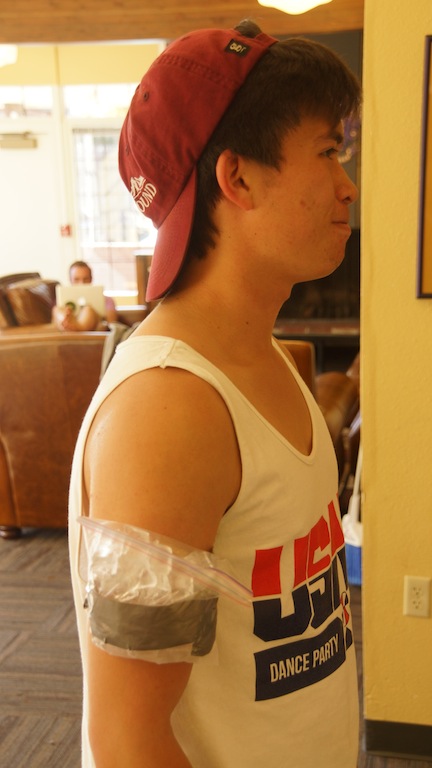
With the academic year in full motion, many students have slowly started to come to the realization that their style is not as personalized as they had thought.
“I took a step back and realized I wasn’t the only one in a flannel and Birkenstocks anymore,” student Ian McDonald said.
Others have begun to notice the abundance of concert tees, rolled jeans, and non-prescription glasses as well and are now desperate to find an individualized style.
Some are calling this the largest fashion epidemic since the frenzy caused by the realization that turtlenecks weren’t fashionable in the early 2000s.
This has sent many students into a panic, scrambling to find their unique style.
The campus-wide realization has caused a series of new fashion trends to rise and fall within the last several weeks.
The most prominent of these trends arose in the sporting community and can only be described as strapping ice to various parts of the body using plastic wrap. “Icing” is the term used to describe this style and it is slowly sweeping the campus.
“Icing really makes your muscles feel good,” student Kelly Hanson said.
This reasoning sounds similar to those who advocate wearing Birkenstocks because it is a “comfortable” shoe.
Some people are beginning to believe that these are just excuses fabricated to get away with obscure fashion trends.
“The students are actively finding ways to look ridiculous now,” an anonymous faculty member said. “I didn’t mind the torn jean fad, and then when they started belting those cork shoes to their feet I thought they were pushing it, but this is really too far. I’ve come to the conclusion that these students are trying to look ridiculous.”
Despite their adversaries’ beliefs, students have continued “icing” their wardrobes. Our reporters intercepted several ice fashionistas in the S.U.B. and inquired about their style.
“Icing, for me, is about pushing the limits of fashion,” student Louis Gramm said. “Also, I like to compensate for my lack of a personality with obnoxious outfits.”
“If I don’t look different than everyone else, how will people know I am unique?” student Chris Fraizer said. “I have to ‘re-ice’ multiple times a day, but I know it’s worth it.”
The trend has become a problem for some classrooms; professors complain about melted ice being an issue and students leaving to switch out ice bags.
“If this spreads outside of our campus, instructors who have problems with revealing clothing being a distraction are in for the ride of their lives,” an anonymous philosophy professor said. “Just wait until they have to deal with a bag of ice getting popped in the middle of a lecture.”
Some of those who aim to end the fad have taken to more drastic measures. Students opposing the trend have begun cutting holes in the bags of ice to send the message of their disapproval. In one case, a protestor accidentally cut a student.
“This attack won’t stop me, fashion is an important part of being human and I will not change because someone wants me to,” the victim said.
While this has been the most extreme case, school officials are beginning to worry for the safety of their students. Until further notice, all “icing” has been banned on campus, igniting a new wave of complaints.
“I’m so confused as to why icing was banned, I tore my Achilles tendon last month and really need to keep the swelling down,” student athlete Cora Fields said. “Why don’t students understand that this wasn’t ever supposed to be a fashion statement?”
With much controversy surrounding “icing,” it will be interesting to see how the fad plays out in the coming weeks.


